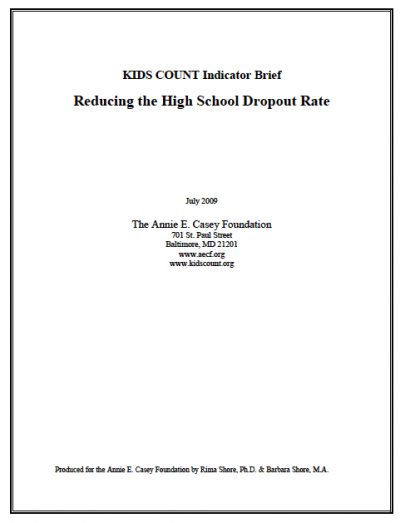US Dropout Rate
An estimated 1.2 million teens, age 16-19, were neither enrolled in nor graduated from high school in 2007--a dropout rate of 7%.

While a variety of methods are used to calculate the nation's high school dropout rate, the results are the same: a growing number of young people are leaving school without graduating, putting themselves behind those with high school diplomas in terms of securing a stable economic future for themselves and their families. This brief outlines five strategies for reducing the number of teens who drop out before graduating from high school.
The costs of dropping out of high school have never been higher, with many studies indicating that those without a high school diploma struggle with earning enough to adequately provide for themselves and their families. To reduce the dropout rate, especially among the most vulnerable populations, a mix of school-based and community-based strategies should be employed. These include:
We hope you'll find value in this report. We’d love to get a little information from you, which we'll use to notify you about relevant new resources.